Y5 Home Sweet Dome
£3.00
KS2 National Curriculum:
✓ Describing settings; using expanded noun phrases and rich vocabulary.
This lesson looks at settings in a science fiction story in detail, and it includes answering higher and lower order questions on the settings of a science fiction story, reading extracts from science fiction stories and identifying the setting of these extracts.
There is a five-minute evidence-based CPD activity at the end of this lesson which will develop classroom teachers’ skill set. This CPD consists of a research extract on peer assessment with a five-minute activity based on this extract.
Description
These evidence-based learning (EBL) lessons are based on classroom practice that has been proven, by research, to maximise thinking, learning and attainment. From an extensive review of educational research, we identified the eight key classroom thinking and learning skills that were common across these research papers. We named these eight key skills “EBL skills”.
EBL skills have been proven by research to maximise learning because they combine the most productive thinking skills with the most effective learning behaviours. Each of our evidence-based learning lessons uses the English curriculum as a framework through which the eight EBL skills are delivered.
Teachers also have the opportunity to add to their own skill set or refresh their existing skills with our five-minute CPD activity, based on one of the EBL skills used in this lesson.
The skills in bold below are the EBL skills developed in this Science Fiction lesson. Click on each skill to learn more about that skill.
- Collaboration
- Thinking Skills
- Peer Assessment
- Peer Teaching
- Self-Assessment
- Metacognition
- Self-Regulation
- Independent Learning
1 review for Y5 Home Sweet Dome
Only logged in customers who have purchased this product may leave a review.
Related products
-


Y5 All Characters Welcome
£3.00 Add to basket £3.00Add to basket
£3.00Add to basketKS2 National Curriculum:
✓ Describing characters; developing dialogue and consistency in character.
Activities in this lesson include learning about the need to be consistent when describing a character; looking at the four conventional ways of describing a character, identifying the characteristics of good and bad characters in science fiction stories and answering higher and lower order questions.
There is a five-minute evidence-based CPD activity at the end of this lesson which will develop classroom teachers’ skill set. This CPD consists of a research extract on self-regulation with a five-minute activity based on this extract.
VIEW -


Y6 Ground Control to Major Tom
£3.00 Add to basket £3.00Add to basket
£3.00Add to basketKS2 National Curriculum:
✓ Using direct and reported speech; punctuation of speech.
The activities in this lesson include exploring the use of dialogue through the science fiction genre, how to write reported and direct speech using the correct punctuation and completing a true/false task that summarises all the features of reported and direct speech.
There is a five-minute evidence-based CPD activity at the end of this lesson which will develop classroom teachers’ skill set. This CPD consists of a research extract on metacognition with a five-minute activity based on this extract.
VIEW -


Goldilocks Arrested
£3.00 Add to basket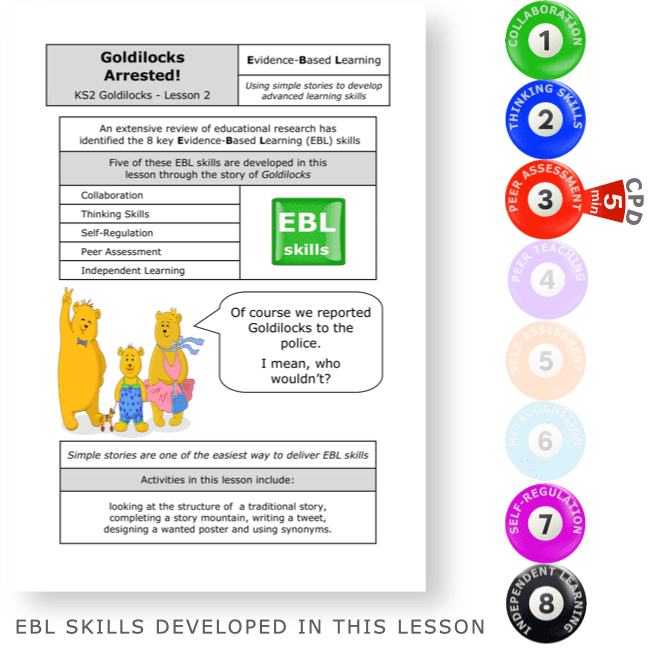 £3.00Add to basket
£3.00Add to basketActivities in this lesson include looking at the structure of a traditional story, completing a story mountain, writing a tweet, designing a wanted poster and using synonyms.
There is a five-minute evidence-based CPD activity at the end of this lesson which will develop classroom teachers’ skill set. This CPD consists of a research extract on peer assessment with a five-minute activity based on this extract.
VIEW -


Y5 Robots Got Talent
£3.00 Add to basket £3.00Add to basket
£3.00Add to basketKS2 National Curriculum:
✓ Identifying structure and themes; participating in discussions and presentations.
Activities in this lesson include learning about common themes for science fiction stories, the structure of a science fiction story, the main features of science fiction stories, how to design a poster and creating a poster showing the key features of science fiction stories.
There is a five-minute evidence-based CPD activity at the end of this lesson which will develop classroom teachers’ skill set. This CPD consists of a research extract on peer assessment with a five-minute activity based on this extract.
VIEW

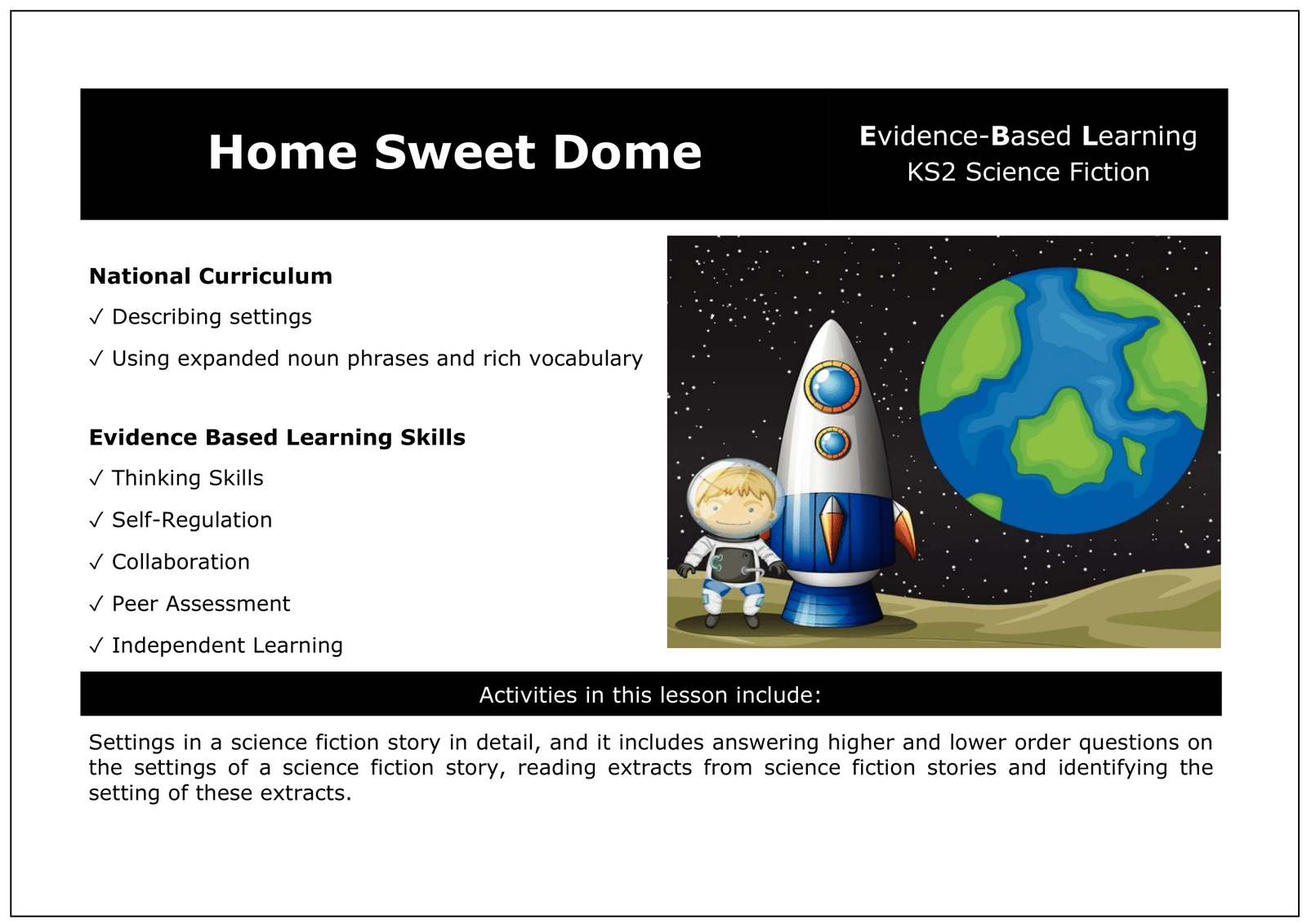
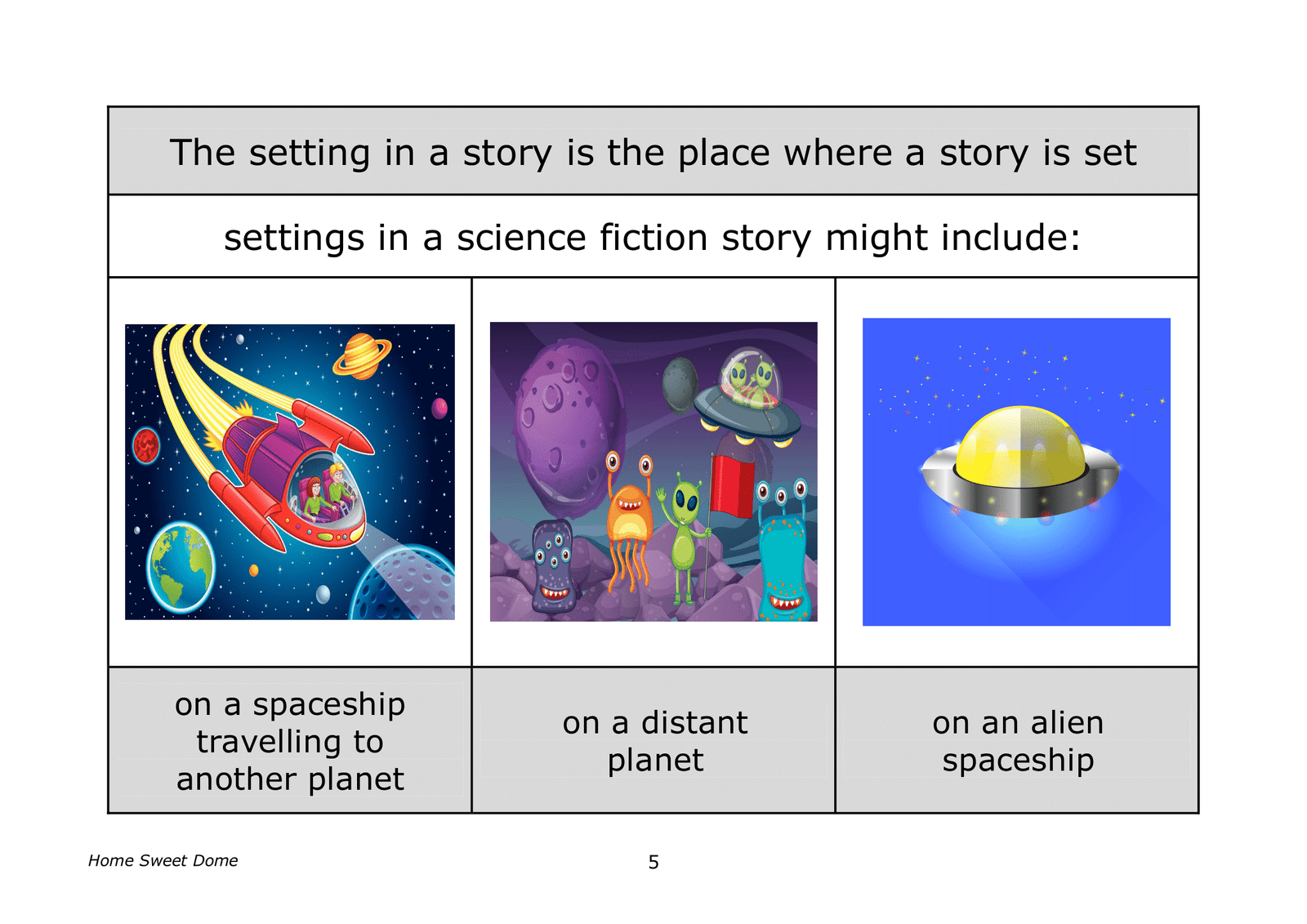
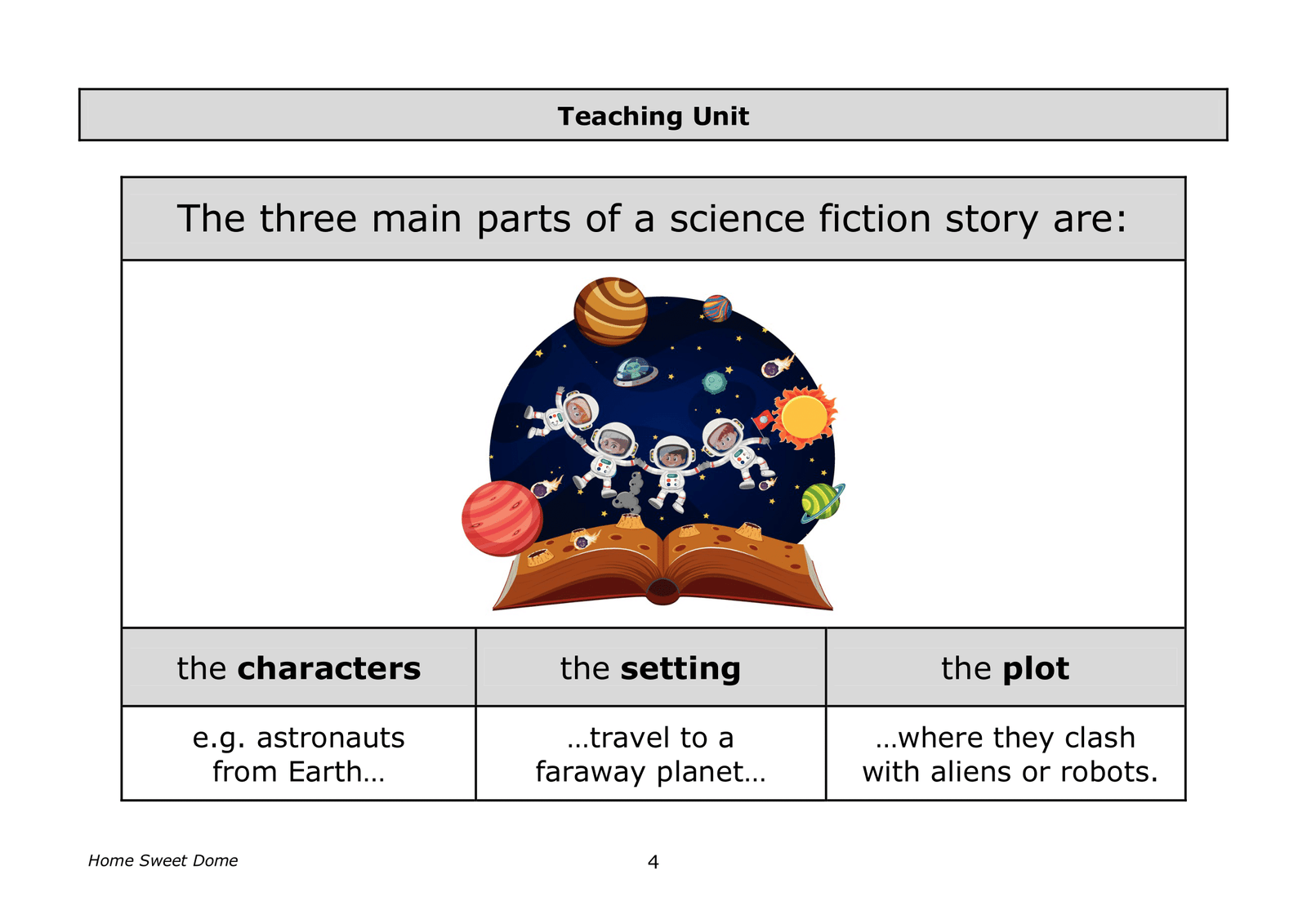
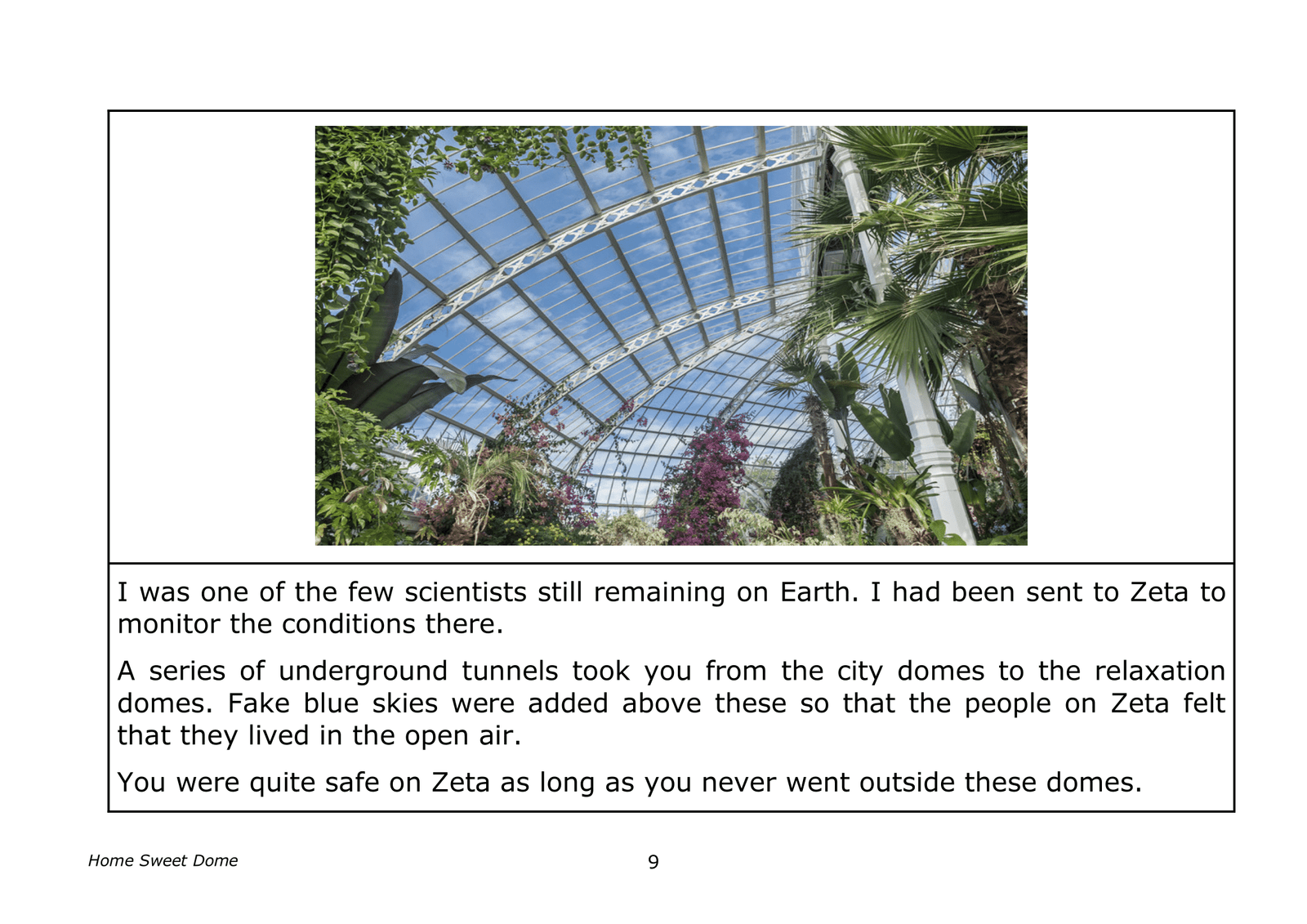
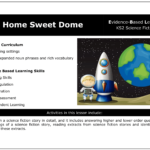
Philipem (verified owner) –
We asked a.i. to review this lesson. This is what it said:
“Home Sweet Dome” Rating: ⭐⭐⭐⭐⭐
The “Home Sweet Dome” lesson is a great resource for teachers looking to develop their students’ English literacy skills alongside evidence-based learning (EBL) skills. This KS2 science fiction lesson focuses on settings in stories, covering tasks like answering comprehension questions, identifying settings from extracts, and using descriptive language.
Not only will it get your pupils engaged with an exciting sci-fi narrative, but the collaborative activities and self-regulation prompts build vital cognitive and interpersonal abilities. The peer assessment component develops valuable skills in giving and receiving feedback constructively.
What makes this resource really shine is how it embeds educational research into every aspect. The activities explicitly map onto 5 of the 8 key EBL skills: thinking skills, self-regulation, collaboration, peer assessment and independent learning. Each skill is represented by a simple icon to reinforce learning.
Teachers will appreciate the ready-to-use 5-minute CPD section unpacking the research behind peer assessment. The actionable steps and checklist make it easy to evaluate and build your own classroom practices.
Overall, I’d give “Home Sweet Dome” a 5-star rating. It’s a complete package that engages pupils with literacy-boosting tasks while imparting transferable 21st century skills – the perfect resource for an evidence-based classroom.